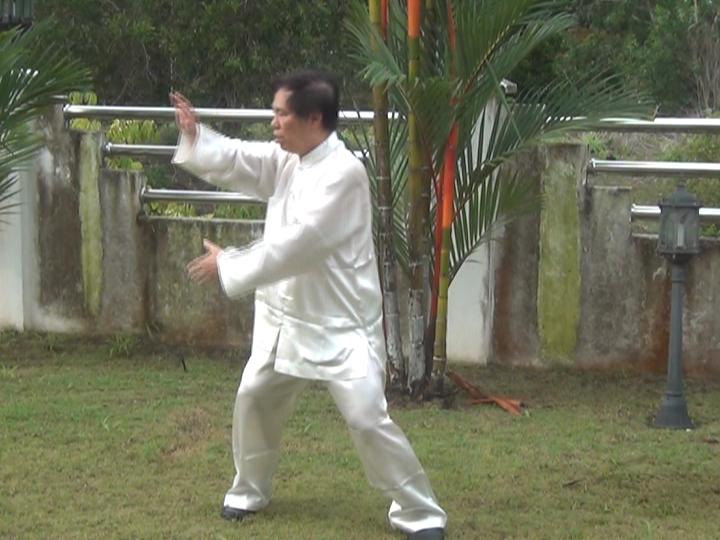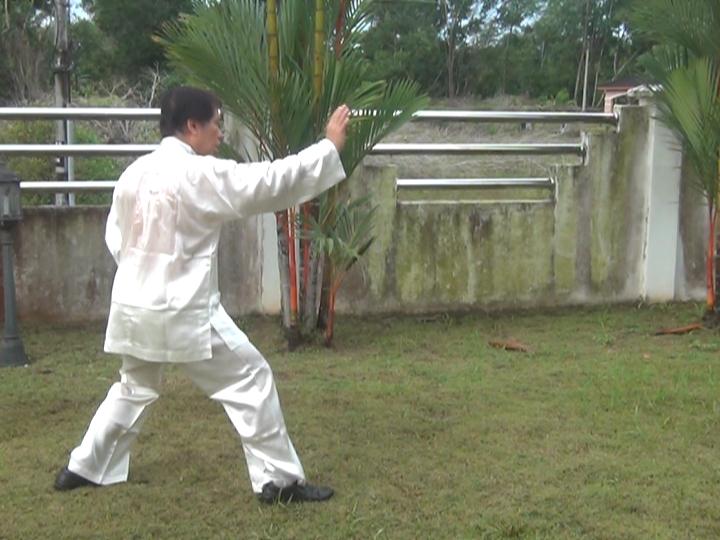THE SMOOTH, GRACEFUL MOVEMENTS OF TAIJIQUAN

Cloud Hands
Question
The Yang Taijiquan I currently practice is different and involves a lot of intricate movements to complete one pattern. I would like to use "Cloud Hands" as an example.
Before the hand completes its downward movement in "Cloud Hands," there is a downward backhand strike, a side strike and downward chop! The same three striking movements are repeated on the left side and the right side in one continuous flow, completing the sequence of "Cloud Hands." The three striking movements are executed very subtly from the wrist to perhaps prevent outsiders from "stealing" the art. From the outside, it looks like one large continuous flow with no break.
Aside from training strikes, the extra movements seem to serve no actual purpose in combat. My flow of internal force also feels choppy when I perform it this way. However, I can't help but wonder about the correlation between the wrist movement and generation of internal force.
Could this version of "Cloud Hands" be developed from spontaneous chi flow? Perhaps Yang Lu Chan discovered this movement one day in spontaneous chi flow while practicing his Chen Taijiquan and decided to formalize his discovery into a new pattern. After all, nothing is rigid and structured in spontaneous chi flow. Yang Deng Fu would later simplify "Cloud Hands" to be one continuous movement.
Stephen
Answer
What you have described is not what we do in our Wahnam Taijiquan. It is also not what Yang Style practitioners do. It was also not what I conclude from reading their records what Yang Style masters did in the past
From my understanding of Taijiquan philosophy in particular and kungfu philosophy in general, the actions described by you do not serve any useful purposes.
Unless a practitioner already possesses a lot of internal force using these movements, which are not normally visible to observers, for striking or any combat application is not effective. But you can have an informed guess whether these subtle movements are used for combat application by asking yourself, with due respect to the master, whether the master teaching these movements have a lot of internal force, and whether he is very competent in combat.
If the answer is no to one or both questions, then combat application is unlikely to be a reason for such practice. If the answer is yes to any one of or both the two questions, then combat application may be, but not surely, a possible reason for the training of these movements.
But the best is to ask the teacher himself why these subtle movements are included in the version of Cloud Hands he teaches. You questioning must be polite, and it must indicate that you ask to find out, not to question his authority. If he hesitates or refuses to answer the question, you must tactfully change to another topic.
It is also unlikely that the subtle movements are made to hide some secrets. Although some sophisticated techniques are close secrets, generally secrets lie in skills and application, not in form. If a teacher says that he hides some techniques, which are from, so as to keep some secrets from leaking to the public, we can safely conclude that he has not reached a high level in the art.
To put it crudely, and this does not refer to your school, Taijiquan has been so debased nowadays that it does not even measure to folk dancing. Who except self-deceived fools that cannot even perform folk dancing but think they are practicing a fantastic martial art, would be interested in such secrets? From another perspective, when teachers cannot even teach ordinary Taijiquan properly so that their students can derive some basic benefits of a physical exercise instead of knee injuries, what secrets do they have?
It was unlikely that this version of “Cloud Hands’ was developed from spontaneous chi flow. If you observe chi flow, generally the movements are big and smooth, not jerky and minute. It is pertinent to know that chi flow was not common in Taijiquan in the past, not even amongst masters.
It was unlikely that Yang Lu Chan discovered these subtle movements in spontaneous chi flow, and Yang Deng Fu later modified these subtle movements into big continuous movements. Such small movements were unlikely in spontaneous chi flow.
Presuming that this unlikelihood actually happened, there was no good reason why Yang Lu Chan preserved these jerky, minute movements and passed them on to selected disciples. Even if this were true, there would be other schools today practicing these minute movements, though they may not know their significance.
My conjecture why these minute movements occur is not complimentary, and I hope your teacher’s answer will prove me wrong. Somewhere down the lineage, a teacher added these minute movements to make his teaching grandiose, without realizing that his addition contradicted fundamental Taijiquan principles.

Taijiquan movements are smooth and graceful, not rigid and staccato
The question and answer are taken from the thread Yang 108-Pattern Set: 10 Questions for the Grandmaster in the Shaolin Wahnam Institute Discussion Forum.
